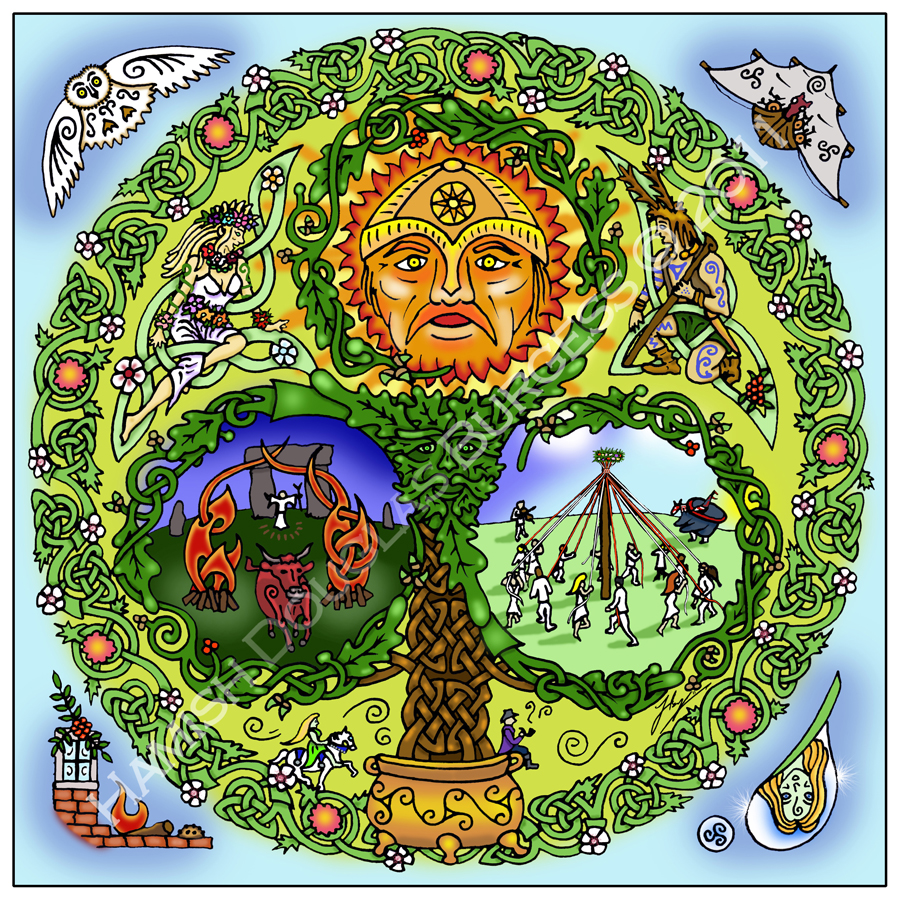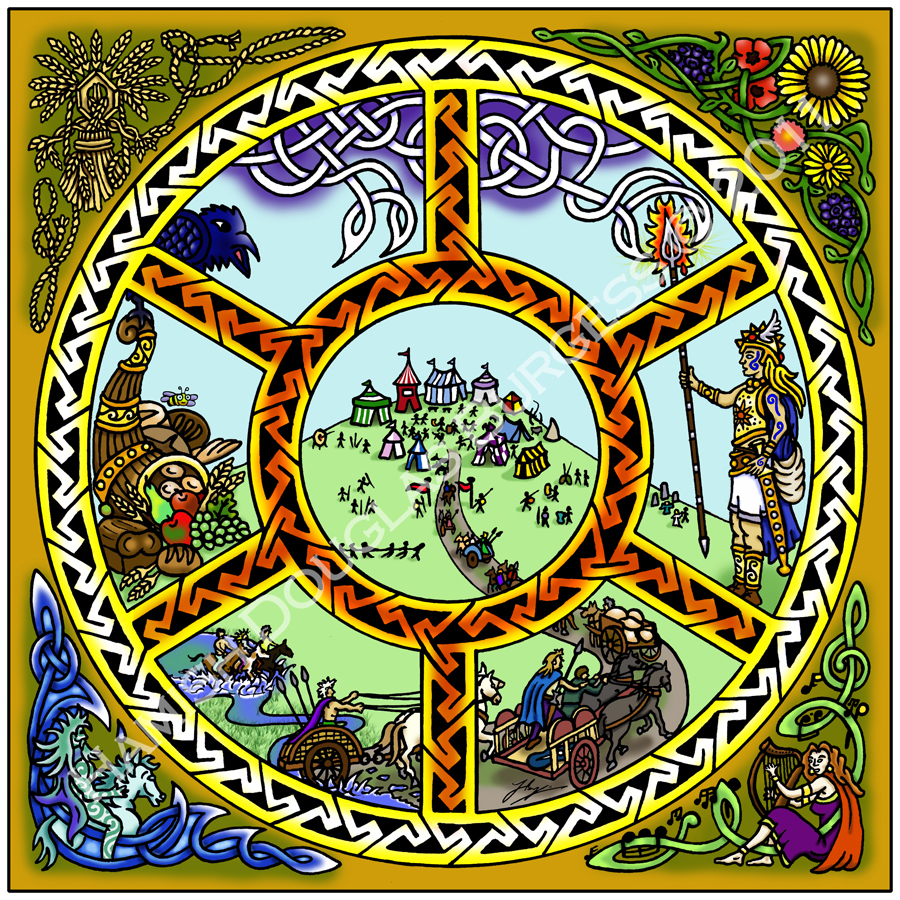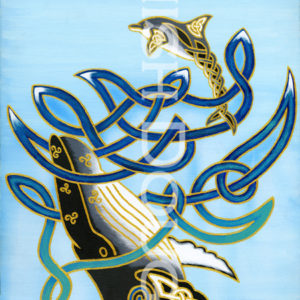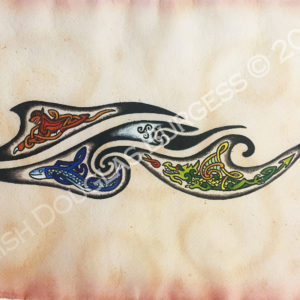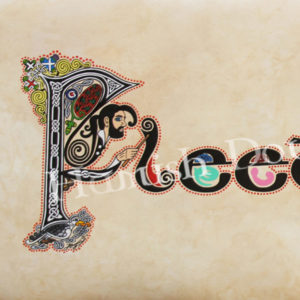Four Seasons Collection
$500.00
THE FOUR SEASONS COLLECTION
of Samhain, Imbolc, Beltaine and Lughnasadh © Hamish Burgess 2010/11. A set of four separate signed and numbered Limited Edition Giclée prints of 300 on water-colour paper. Each approx 12 x 12 inches, plus a white unprinted border.
- Handmade item
- Materials: Giclée, Print, Watercolor Paper
Please check back again shortly.
FOUR SEASONS COLLECTION
4 SEPARATE PRINTS – SAMHAIN, IMBOLC, BELTAINE, and LUGHNASADH © Hamish Burgess 2010/2011.
4 separate signed and numbered Limited Edition Giclée prints (out of 300) on water-colour paper. Each print approx 12 x 12 inches, each plus a white unprinted border. Original Celtic art by Hamish Burgess, all pieces for the cover of The Celtic Connection newspaper in Vancouver BC and Seattle. A series of four seasonal works.
PLEASE NOTE: These are not printed or mounted together – the cover picture is just for this website. You will receive the collection shipped together, but each season as a separate print, with a white border, as shown in the images below. This is in fact a way to purchase the whole collection at a discounted price. You could mount them yourself as in the cover photo, or in a linear row. The seasons in the ancient Celtic world run starting with Samhain, as dark precedes light in our tradition, then Imbolc, Beltaine and lastly Lughnasadh. Or of course you could frame them individually, and arrange them how you like.
Top left: SAMHAIN © Hamish Burgess 2010
Samhain – the Celtic New Year – the great wheel of the year turns, and starts the new cycle with the Feast to the Dying Sun, or the Celtic Feast of the Dead, marked by the rising of the Pleiades stars (right). Top – The Old Crone side of the Triple Goddess, the Cailleach, begins her reign as goddess of winter, by striking the earth with her staff, turning it hard and icy cold. Bottom – The Horned God, Cernunnos, Guardian of the Gateway to the Underworld, is ruler of the natural kingdom, in all it’s aspects of life, death, and rebirth. As Lord of Nature, he oversees the ‘Wild Hunt’, in which spirits of the dead are carried to the Otherworld. He carries a kingly torc, and the ram-headed serpent, symbol of Otherworld knowledge. The serpent and his antlers both shed in a cycle of renewal. On this night when the veil between our world and the Otherworld are at their thinnest, it is said that Spirits (right), ancestors, and the Sidhe or wee-folk (left) can freely roam the two worlds. Center – The Morrigan, warrior queen and Goddess of Death, is said to give up her campaign season, and on the evening of Samhain, she mates with the ‘Good God’ Daghda, god of fertility and abundance. He is the Celtic father-god and Chief of the Tuatha de Danann, who are now the Sidhe or faerie folk, said to have long ago gone to live in the Otherworld. He has a magic club of destruction, and at the other end, healing, as well as a cauldron of healing and plenty. This symbolic union of the god of light and the goddess of death, represents the preparing of the land for germination and the darkness of winter.
The Oak King ends his reign (bottom), and gives sovereignty to the Holly King, with his green leaves and bright berries (top) a reminder of the new life to come, after the dark half of the year.
Top right: IMBOLC © Hamish Burgess 2011.
Imbolc – the coming of Spring – the great wheel of the year turns again on February 1st, with the ancient sacred day of the Celtic goddess Brigid – Mother Goddess of Ireland – also called Brigit, Bride, Brighid, and Brigantia. The root of her name means ‘bright’ or ‘exalted’, and possibly ‘firebrand’. Tradition has it that she walks the earth Imbolc eve, and Bride with her white wand (top left) is said to “breathe life into the mouth of dead Winter, and bring him to open his eyes to the tears and smiles, the sighs and laughter of Spring” (Carmina Gadelica Vol.1). She is goddess of the home and hearth (centre), and associated with sacred flames, representing the return of the sun and warmth, coming with the lengthening days. Her 3 fires are the hearth, the forge and inspiration.
In the later Celtic Christian Church, an extraordinary woman was to become a famous abbess, who after her death in 523AD, became Brigit’s counterpart as Saint Brigit, with Imbolc celebrated today as St.Brigit’s Day – her sanctuary at Kildare, or Cill-dara (Church of the Oak), was likely continued worship on an older Druidic site to the goddess. The saint had a sacred flame tended by nuns, which was kept alight for about a thousand years. The following church day is Candlemass, a continuation of the sacred fire tradition.
The wickerwork cross (centre) has been a popular talisman since the 17th century, known as St.Brigit’s Cross, but is thought to have origins in the ancient symbol for the sun. According to folklore, the young woman destined to be St.Brigit was fed on the milk of a Red-Eared Cow (bottom right).
Pictured above the goddess Brigid are her legendary “Oxen of Dil, Fea and Feama, Red and Black”.
She is associated with many holy springs and healing wells, and legend has it that the old goddess of winter, the Cailleach (bottom left), drinks from a sacred well and transforms into Brigid and the spring.
Bottom right – Brigid is the triple goddess of Smithcraft (with Celtic warriors invoking her protection before battle), Healing (represented by the cauldron), and Poetry and the Arts (the Ogham stone, reading ‘Imbolc’ in the ancient markings from the bottom upwards). Patroness of Druids and Bards, she ruled over inspiration, poetry, and divination. She is goddess of Weaving (shown by the tartans), and of Ale-making. Around the islands of Britain and Ireland, standing stones (shown on the hill-top) are sometimes called Bridestones, named after the goddess Bride.
Along with healing, she is the goddess of Childbirth. The expectant mother (top right), prays to Brigid among the snowdrops, a sign of new life flowering through the cold snow. Ravens start to build nests for their young at this time of year. The entrance to a burial mound on the Hill of Tara aligns to the sunrise on Imbolc morning.
Imbolc, also spelled Imbolg (translated as ‘in the belly’), and Oimelc (‘ewes milk’) is a time of the renewal of life, with lactating ewes (bottom left) ready for their young. The milk is a sign of life, shown here as white interlacing knotwork and flows into the earth. In folklore, people pour a small amount of milk on the ground this morning, to thank the Mother for feeding them for the last year.
A symbol of Brigid (and that of healing, still seen on the physician’s staff of today) is the Serpent, who at this time of year was said to come out of it’s hole, like the badger, to see if the warming weather will affect her winter sleep. A fine frosty day forbode more winter ahead, but a cloudy day meant the quick end of winter. This tradition continued in the Americas, with European settlers seeing this habit from a new animal, and is now Groundhog Day.
Bottom right: BELTAINE © Hamish Burgess 2011.
The old Celtic name for May Day is Beltane, ‘bright fire’, and the coming of Summer. The great wheel of the year turns again on the evening of April 30th, with ancient Celtic festival of Beltane, Beltaine, or Bealtaine in Irish, dedicated to the Sun God Bel, ‘the bright and shining one’. This seasonal feast marks the end of the dark half of the year, and is about honouring life. The Sun God is released from the captivity of Winter, and returns to visit the Earth Goddess, with a time of joyous celebrating.
The center of the piece shows a sacred tree of ancient Ireland, the Bile Tree, one of 5 said to have grown from a tree branch with apples, nuts, acorns and berries all growing on it – brought by a giant man arriving at King Conaing’s hall at Tara. The Bile Tree was at the heart of the clan, the Irish Tree of Life, connecting the three worlds shown inside the leafy triscele of the Mother Goddess (also hiding a Green Man). Top is the Skyworld of the heavens, showing the Sun God Bel.
Right is the Middleworld of us humans – the Bile has gone, but the tradition survives as the Maypole, with it’s fertility dance of young men and maidens circling the pole with coloured ribbons, weaving around each other, making a pattern on the pole. Boys traditionally held red ribbons for the Sun God, and girls held white ribbons for the Goddess. In Padstow, Cornwall, the May Day character the Obby Oss does a fertility dance with white clad Mayers, around the town to music, sometimes capturing a maiden under his costume for good luck with marriage and children.
Left is the Otherworld of the spirits and the sidhe, or faery-folk, showing here the old Beltaine traditions of long ago. People did everything in their power to ensure the return of the Sun God, with huge Bel fires being lit on a knoll, started with 9 different types of sacred wood collected by the Druids. People and animals passed between the two need-fires to bring luck and protection, and purify the cattle before going to summer grazing pastures.
Beltane is a fertility festival, with young folks full of the joys of Summer. An old custom of ‘greenwood marriages’ saw couples disappearing to the woods for the night, staying out to see the new May sunrise, and collecting boughs and flowers for May Day festivities. Many of the girls ended up with a child 9 months later at Imbolc, protected by the Goddess Brigit. Shown either side of Bel, to honour the handfasting of the Goddess and Sun God, the Flower Maiden is ready to meet her consort, Cernunnos, the forest god, or the Green Man.
In Welsh mythology of ‘The Mabinogion’, a maiden Blodeuedd was made from flowers as a bride for Lleu. She fell in love with another, and plotted to kill Lleu, who escaped as a wounded eagle, later to return for revenge and transform Blodeuedd into an owl (top left), flying only by night and spurned by other birds.
Top right shows a ship – according to the ancient ‘Lebor Gabala’, the ‘Book of Invasions’, several invasions of Ireland took place at Beltane. The Partholons, the Tuatha de Danaan, arriving ‘through the air in a mist’, and finally the Milesians, ancestors of the Gaels, arrived this night.
Bottom right shows the May Morning Dew – another old May Day custom was to wash your face in the dew before dawn for luck, or to ensure maidens beauty – here a sidhe maiden looks into the dew drop.
Bottom left shows a hearth and window – household fires would be extinguished only at Beltane, so they could be re-lit from brands of the sacred fires, as a symbolic blessing. A traditional bannock sits on the hearth, a cake that would be broken and pieces thrown into the Bel fires with invocations, or left for on doorsteps as an offering to the wee folk.
In olden days, rowan branches would be hung at doors and windows for protection against mischievous spirits, because at Beltane the veil between our world and the Otherworld is at it’s thinnest, as at Samhain, the counterpart at the dark start of the year.
The two small figures below the Tree are the Faery Queen and Thomas the Rhymer. Legend has it that if you sit beneath a tree on Beltane night, you may hear the Faery Queen, or the sound of her white horse’s bells, as she rides through the night looking for folks to take to her realm. If you hide your face, she will pass by, but if you look at her, she may take you with her, as in the Scottish ballad of ‘Thomas the Rhymer’, who left with the Queen and has never been seen since.
The knotwork flower garland is based on a tree of life in the ‘Book of Kells’, and shows flowers linked to Beltane, hawthorn and marigolds.
Bottom left: LUGHNASADH © Hamish Burgess 2011.
The great wheel of the year turns again on the evening of July 31st, with the Celtic festival of LUGHNASADH, as the last in the cycle of the four seasons of the Celtic world. Here the Sun Wheel, with a maze of ‘key pattern’ based on ancient Pictish art, frames scenes from ages old tradition.
This feast marks the beginning of Autumn or Fall, and the harvesting season – crops were harvested in August, fruit in September, and meat in October. The ‘first fruits’ of the harvest were crops, and are shown (left) with the cornucopia of breads, grain and fruits, accompanied by a honey bee.
The Christian church also started a feast day, where loaves of bread were baked from the first of the harvested grain, and placed on the church altar on the first Sunday of August – it was called Lammas, from an Anglo-Saxon word ‘hlaef-mas’, which meant ‘loaf mass’.
Keeping a watchful eye on her land is Macha, one side of the Triple Goddess, in the form of a crow. Top left is a traditional ‘corn dolly‘ – the spirit of the cut corn is kept in her winter home until ploughed into the first furrow of the next season.
Lughnasadh is named after the Celtic Sun God Lugh (shown right), ‘The Bright or Shining One’, God of the Harvest, who also presides over the arts and sciences, as he was called Lugh the Il-Dana, ‘Master of All Crafts’, or Samildanach, ‘he of the many gifts’. He was expert smith, craftsman, harpist, poet, sorcerer, physician, chess player and warrior. Also called Lugh Lámhfhada ‘the long-handed’, as tradition has it that he carried the magical Spear of Goirias (the Gáe Assail or Lightning Spear), one of the four treasures of the Tuatha De Danann – shown here flaming in Lugh’s hand, and channelling lightning. Thunderstorms provided respite from the fierce summer heat that the threatened crops under Lugh’s care. Celtic tribes across Europe revered this deity also known as Lug, Lugaidh, Lleu, Llew Llaw Gyffes ‘of the skillful hand’, and Llud – many places and tribes bear a version of his name. Lunasa in modern Irish is the name of the month of August.
In Irish history, Lugh’s mother was Eithne, Fomorian daughter of Balor, and his father was Cian of the Tuatha De Danann. In legend it was foretold that he would kill his grandfather, so afraid for his life his mother fostered him to Tailtiu, Queen of the Fir Bolg, and later to the Sidh of the Sea God, Manannán mac Lir, on the Isle of Man. He became a famous warrior of the Tuatha De Danann, and fulfilling the prophecy he killed his grandfather, Balor of the Evil Eye, at the Battle of Moy Tura, winning the day for the Tuatha.
Lughnasadh has been translated as ‘the binding duty of Lugh’, referring to funeral games, Áenach Tailteann (shown center), that he held in honour of his foster-mother Tailtiu, a goddess of agriculture (shown bottom right). It is said that she died from exhaustion after clearing a great forest so that the land could be cultivated, and on her death-bed she told the men of Ireland to hold funeral games in her honour – she prophesied that as long as they were held, Ireland would not be without song. Here she plays an ancient harp, the music is actually the opening of “She Moves Thro’ The Fair”.
It is said that she is buried under the hill where her Tailteann Games were held for nearly 2000 years until the 12th century. The line of chariots and carts (shown bottom) approaching the Games was said to stretch for miles. Shown among the bright tents are folks dancing to a drummer and horn player, with the Games outside – spear throwing, sword-fighting and tug-of-war just some of the athletics practised. From this tradition come the come many summer fairs, festivals and highland games that are held worldwide at this time of year.
The Tailteann Games now lend their name to the village of Teltown, near the Blackwater River (tributary of the River Boyne) not far from Kells, in County Meath. It became famous for ‘Teltown marriages’, where couples at the fair held hands through a hole in a wooden gate, without seeing who their new partner was, and were married for a year and a day. If the trial union failed, they could stand back to back at the next fair and walk away from each other, legally ending the hand fasting. The practise continued locally until the 16th century. Shown (right) by three standing stones, are two small figures at a hand-fasting ceremony officiated by a druid.
Lughnasadh has had another translation – the ‘wedding of Lugh’ – he was said to have married the beautiful Goddess Eriu, the sovereignty of Ireland. The ancient Celtic sun kings were expected to ceremoniously marry the land, and look after her and the people.
Lugh’s foster father, the Celtic Sea God, Manannán mac Lir, watches over the scene from the waves (bottom left), wearing his ‘cloak of mists’, and on his horse ‘Enbarr of the Flowing Mane’, who could travel over water as easily as on land. He gave Lugh (shown right) the use of his sword Freagartach, ‘The Answerer’, and his corrbolg or ‘crane bag’ filled with magical treasures.
Also shown (bottom) are horse races through water, another old tradition associated with the time of year, likely from ancient cleansing rites, and related to the summer months of the Celtic horse goddess Epona.
The Sunday nearest Lughnasadh is called Bilberry Sunday, when folks gathered the black berries, for garlands or bracelets, or to take home to eat. The tradition continues to this day. Top right shows bilberries and flowers linked to Lughnasadh – sunflowers, poppies, dandelions and marigolds.
Also shown in all the four seasons are of course the elements of Earth, Air, Fire and Water.
All prints signed and numbered by the artist in pencil at the bottom.
The prints you receive will not have the artist’s name across it, as in the photo. That is for internet viewing only.
Aloha and mahalo for looking.
| Dimensions | 12 × 12 in |
|---|
Related products
-
Prints
Fleetwood’s



